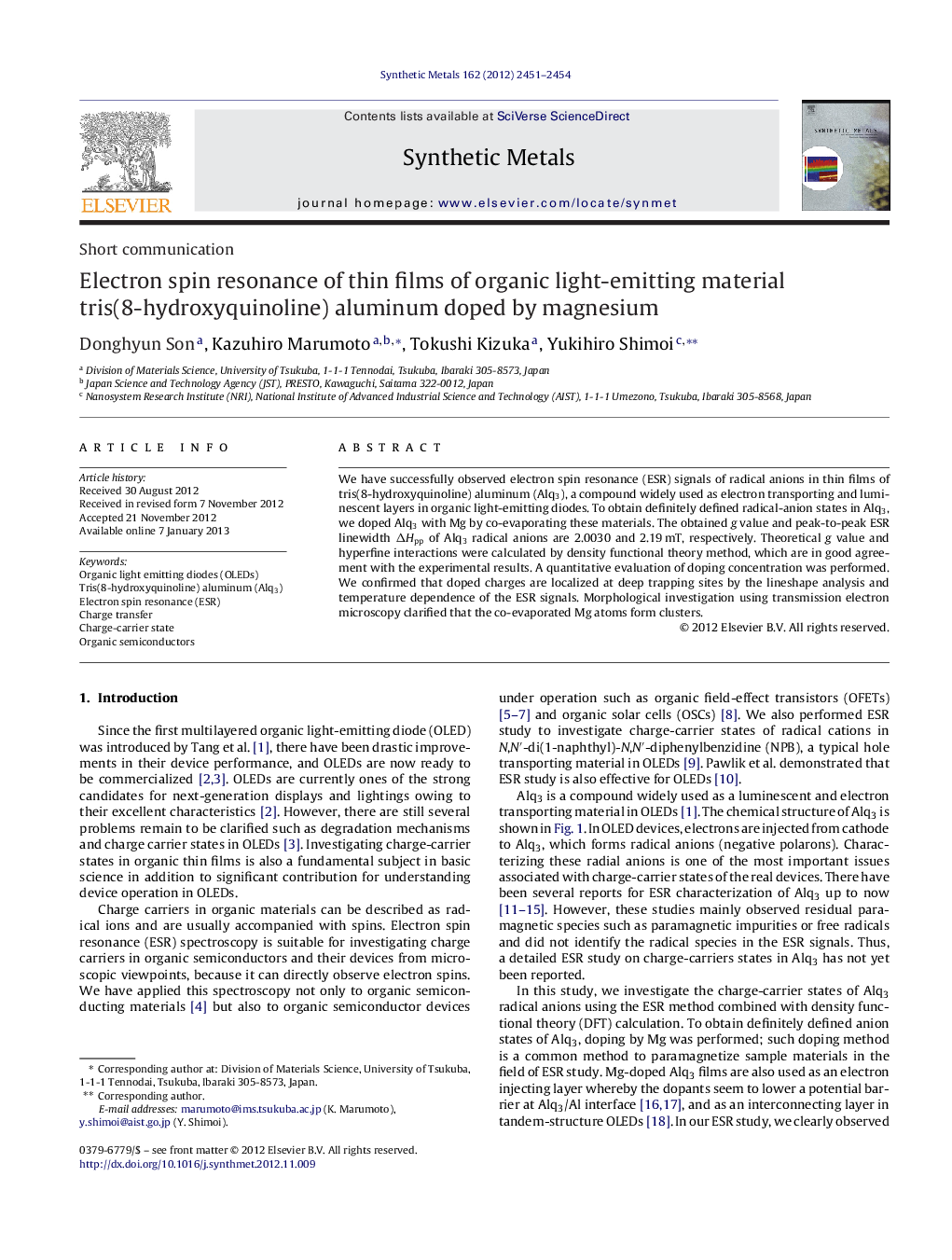| Article ID | Journal | Published Year | Pages | File Type |
|---|---|---|---|---|
| 1441560 | Synthetic Metals | 2012 | 4 Pages |
We have successfully observed electron spin resonance (ESR) signals of radical anions in thin films of tris(8-hydroxyquinoline) aluminum (Alq3), a compound widely used as electron transporting and luminescent layers in organic light-emitting diodes. To obtain definitely defined radical-anion states in Alq3, we doped Alq3 with Mg by co-evaporating these materials. The obtained g value and peak-to-peak ESR linewidth ΔHpp of Alq3 radical anions are 2.0030 and 2.19 mT, respectively. Theoretical g value and hyperfine interactions were calculated by density functional theory method, which are in good agreement with the experimental results. A quantitative evaluation of doping concentration was performed. We confirmed that doped charges are localized at deep trapping sites by the lineshape analysis and temperature dependence of the ESR signals. Morphological investigation using transmission electron microscopy clarified that the co-evaporated Mg atoms form clusters.
Graphical abstractESR spectra of Mg-doped Alq3 thin films (left figure) and spin density distribution profile of an (Alq3)− calculated at the B3LYP/6-31G(d) level. Solid and dashed lines in left figure show the ESR spectrum of the sample co-evaporated in the ratio of 1:1 and 1:0.5 for Alq3 molecule and Mg atom, respectively.Figure optionsDownload full-size imageDownload as PowerPoint slideHighlights► We obtained clear ESR signals of Alq3 thin films by doping with Mg. ► Origin of the ESR signal was investigated by comparing with DFT calculation. ► ESR parameters of the Mg-doped Alq3 thin films are described explicitly. ► Charge carriers in the Mg-doped Alq3 thin films are localized at deep trapping sites. ► Doping concentration was quantitatively evaluated from the number of spins by ESR.
